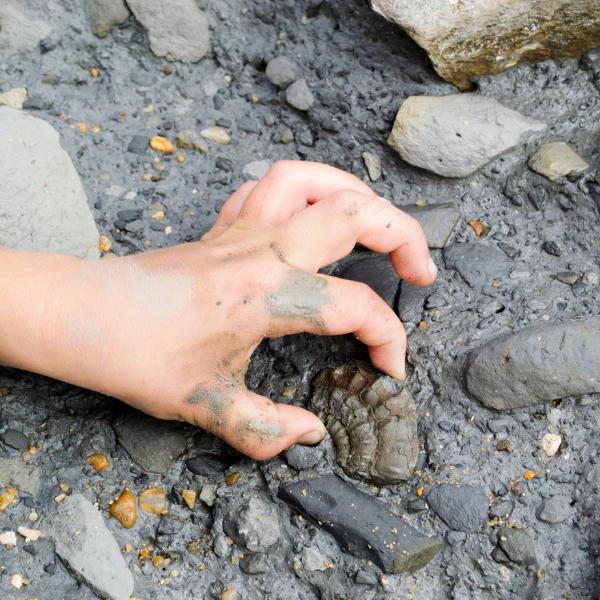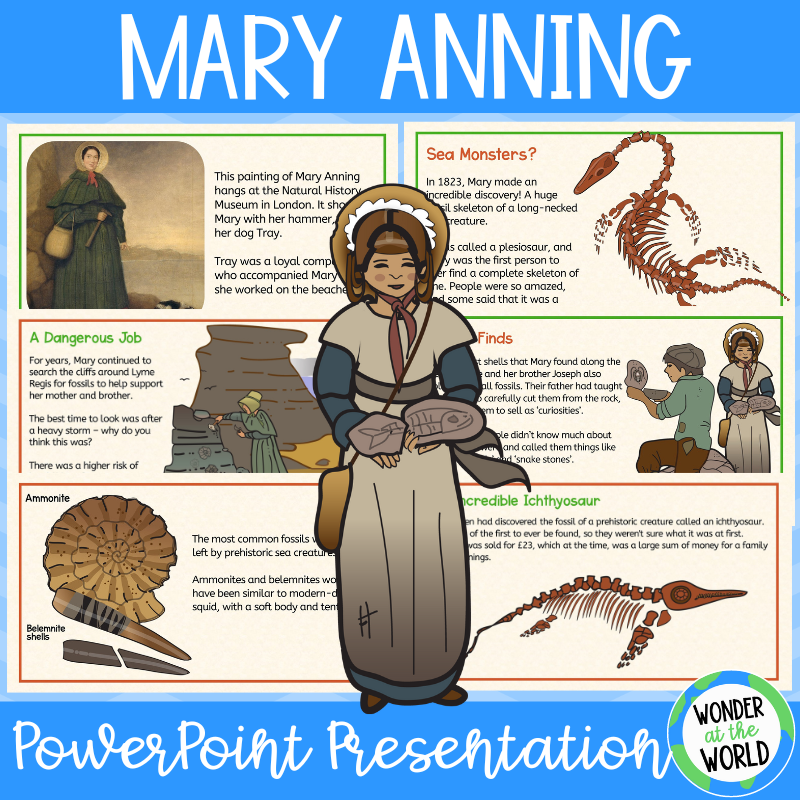British fossil hunter Mary Anning is widely regarded as the first female paleontologist. Born in Lyme Regis, England in 1799, she spent her life collecting and studying Jurassic fossils on the beaches of her home. She is known for making some exceptional discoveries, although at the time, she wasn’t given the credit for her work that she deserved. Discover 8 facts about fossil hunter Mary Anning in this blog post!
Why should kids learn about Mary Anning?
Mary Anning’s is a story of resilience, determination, courage, and discovery, making her an engaging historical figure to introduce your students to. She and her brother made their first major discovery when they were just children themselves!
Mary Anning was an amazing lady…
Here are 8 facts about amazing fossil hunter Mary Anning that you might not know:
A dice with death!
1. When she was a baby, Mary nearly died! During a lightning storm, a lady holding Mary sheltered under a tree. The tree was hit, and the woman was killed but Mary survived!
She sells sea shells on the seashore
2. Mary’s family was not wealthy. Her father was a carpenter and the family also collected shells and ‘curiosities’ on the beach to sell. We now know these curiosities were fossils of sea creatures like ammonites, but back then people weren’t exactly sure what they were!
An amazing discovery!
3. After the death of their father in 1810, the Anning children continued to look for fossils. Mary’s brother Joseph discovered a huge fossil skull in the rock. Over many weeks, a 12-year-old Mary carefully extracted the animal. It was an ichthyosaur – a prehistoric reptile that looked like a combination of a fish and a lizard. This one was over 5 meters long and one of the first to ever be found.
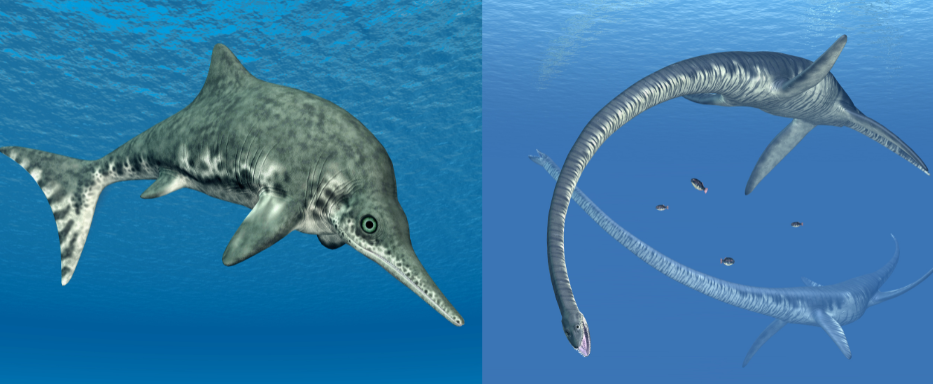
The first plesiosaur
4. Mary searched the beaches and cliffs in all weathers. She went on to discover a fossil of the first complete plesiosaur (a marine reptile with a long neck and flippers),
Another discovery
5. In 1828, Mary discovered the first flying reptile to be found in Britain (dimorphodon). She assisted scientists with her knowledge and discoveries, but because she was a woman, her contributions and work were rarely acknowledged.
Fossil poop
6. Some of Mary’s observations and finds were smaller but no less important. She put forward the idea that rounded rocks she found containing fish scales were fossil poop (now called coprolites).
Mary Anning’s legacy
7. Unfortunately, Mary died when she was just 47 years old. She is buried in the churchyard overlooking the sea at Lyme Regis. Some of her finds are displayed at the Natural History Museum in London and she is now acknowledged for the huge impact she had on our understanding of prehistoric life.
8. In 2022, following a campaign by a local school girl, a statue of Mary Anning and her dog Tray was erected in Lyme Regis. The campaign was called ‘Mary Anning Rocks’ – you can find out more about it here: https://www.maryanningrocks.co.uk/about
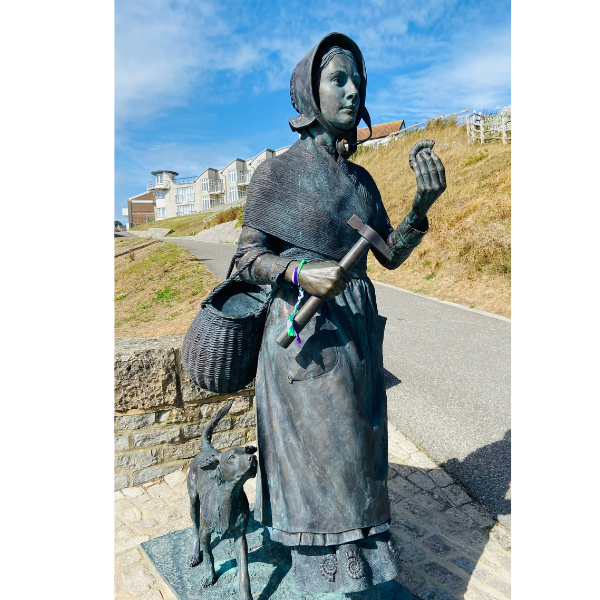
Introducing your class to Mary Anning
Do you want to introduce your children to Mary Anning and her fossil discoveries?
For ages 3-6, my rhyming picture book, A Girl Called Mary is available as a Kindle ebook, or in paperback. Join Mary as she searches the beaches and cliffs around her seaside home and discovers clues about extinct animals from long ago!*
*As an Amazon Associate, I earn from qualifying purchases
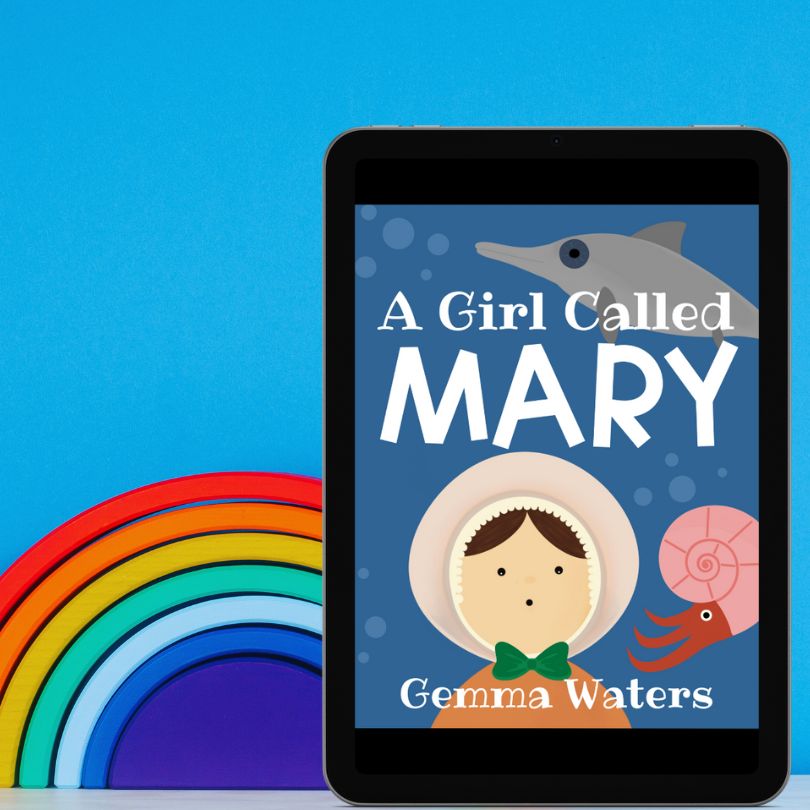
For 6-11 year olds, this Mary Anning PowerPoint will give students an insight into Mary’s life and finds. You may find Mary inspires your young ones to become palaeontologists themselves!
Get a free fossil foldout when you sign up for emails
Want to keep up to date with blog posts, get ideas for teaching natural science, and find out about new resources and freebies. You can sign up for emails from Wonder at the World here. You’ll get a free fossil dinosaur fossil PDF activity for signing up!
